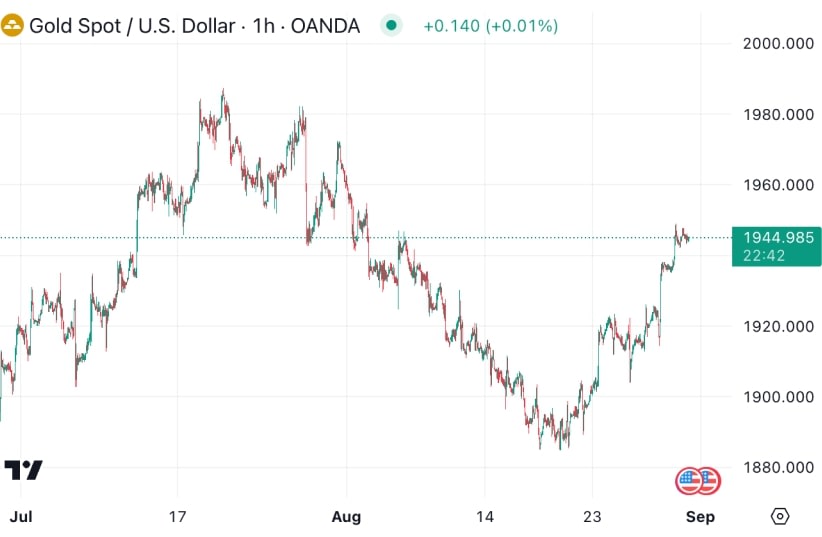The equation looks seemingly explicit – dollar goes down, gold goes up, because people believe precious metals are a hedge. So when August data on the number of jobs in the non-farm sector in the US appears to be weak, the dollar will be crushed and gold will aim towards $2000 per ounce. The problem is that lately, the market hasn’t been responding to employment data as expected.
This Friday’s report may not be any different if the data indeed shows the weakest increase in employment in 30 months, as anticipated. To illustrate the point, after the July data release on August 4 showing an increase of 187 thousand jobs instead of 200 thousand, gold spot price had been falling non-stop for almost two weeks, collapsing from just under $1942 to below $1887 by August 18.
Gold traded slightly better after the June report on July 7. At that time, job growth was also the smallest in two and a half years – 185 thousand compared to the forecasted 225 thousand. Spot gold prices in response rose from under $1925 to $1964. This year, XAUUSD has only traded above $2000 in March and May. Those were the months when job growth first started slowing before speeding up and then slowing down again.
Still, the main trump card of gold is the belief that the Fed is in the endgame of bringing inflation back to target. History shows that the end of the monetary restriction cycle followed by a dovish reversal creates a tailwind for the precious metal.
XAUUSD during the last 3 months, chart by TradingView
Thus, the US labor market statistics for August will be the key for gold. Strong employment at the level of +170 thousand or higher, predicted by Bloomberg experts, would allow selling XAUUSD in the direction of 1900 and 1880 points. A weaker outcome would be a reason to buy in the direction of 1950 and 1970. Before the important release, there is a high probability of consolidation of the precious metal. To track major releases and events on the market, check the economic data calendar.
Still, there is no certainty whether the Fed will tighten monetary policy further or not. Its next steps will depend on the data. First of all, the statistics on the labor market and inflation. The former will show the strength of the US economy. Problems with employment will be a signal of GDP slowdown. In this case, the yield on Treasury bonds and the US dollar will weaken, and gold may rush to $1950 per ounce and higher. The rehearsal, by the way, was the release of weak data on business activity. Thanks to it, the quotes of XAUUSD soared.
While looking forward to the Friday employment data release, don’t forget to carry out your own analysis and look first before you leap.
This article was written in cooperation with TradingView

